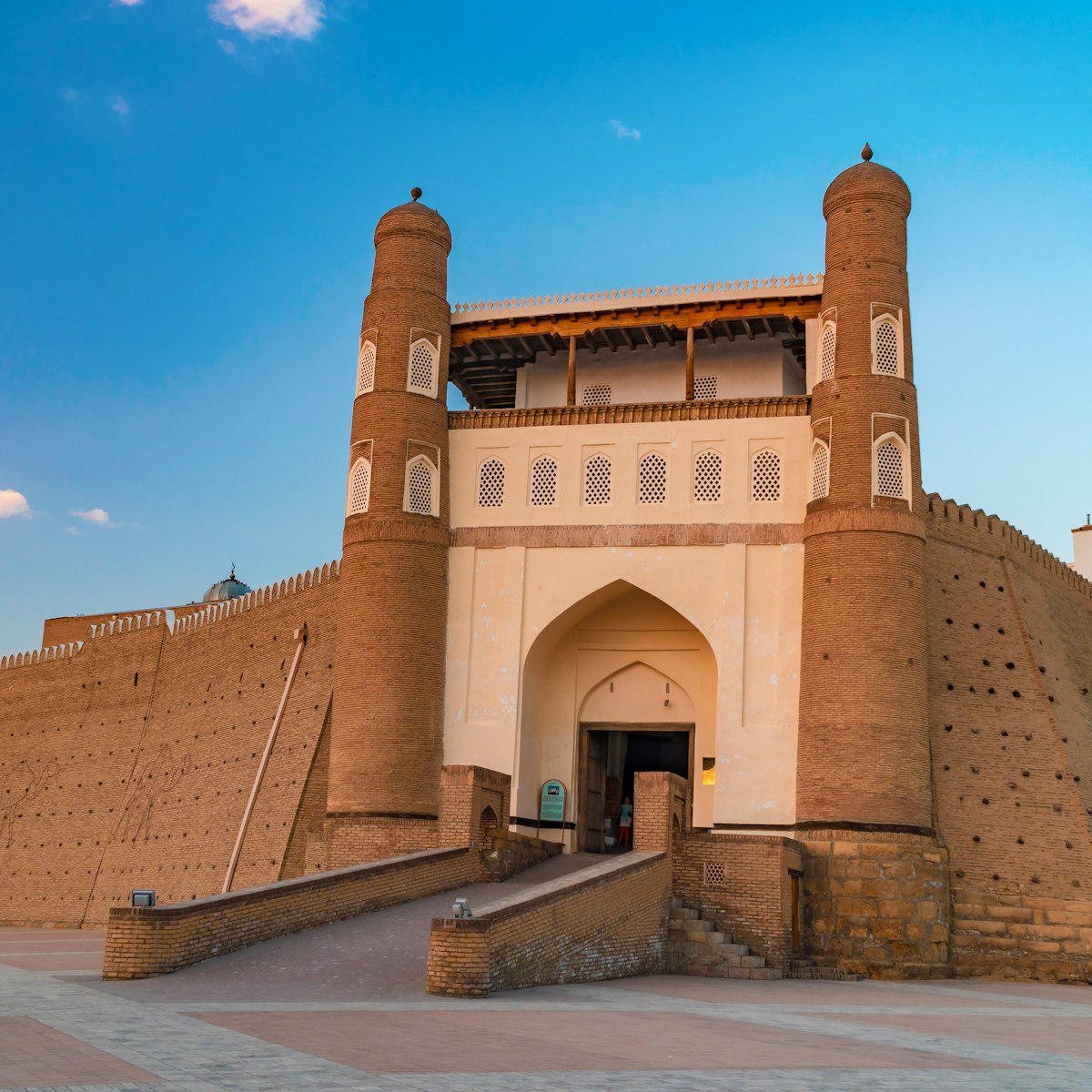
Bukhara
The spectacular-looking Ark, a royal town-within-a-town, is Bukhara’s oldest structure, occupied from the 5th century right up until 1920, when it was…

Bukhara
The spectacular-looking Ark, a royal town-within-a-town, is Bukhara’s oldest structure, occupied from the 5th century right up until 1920, when it was…
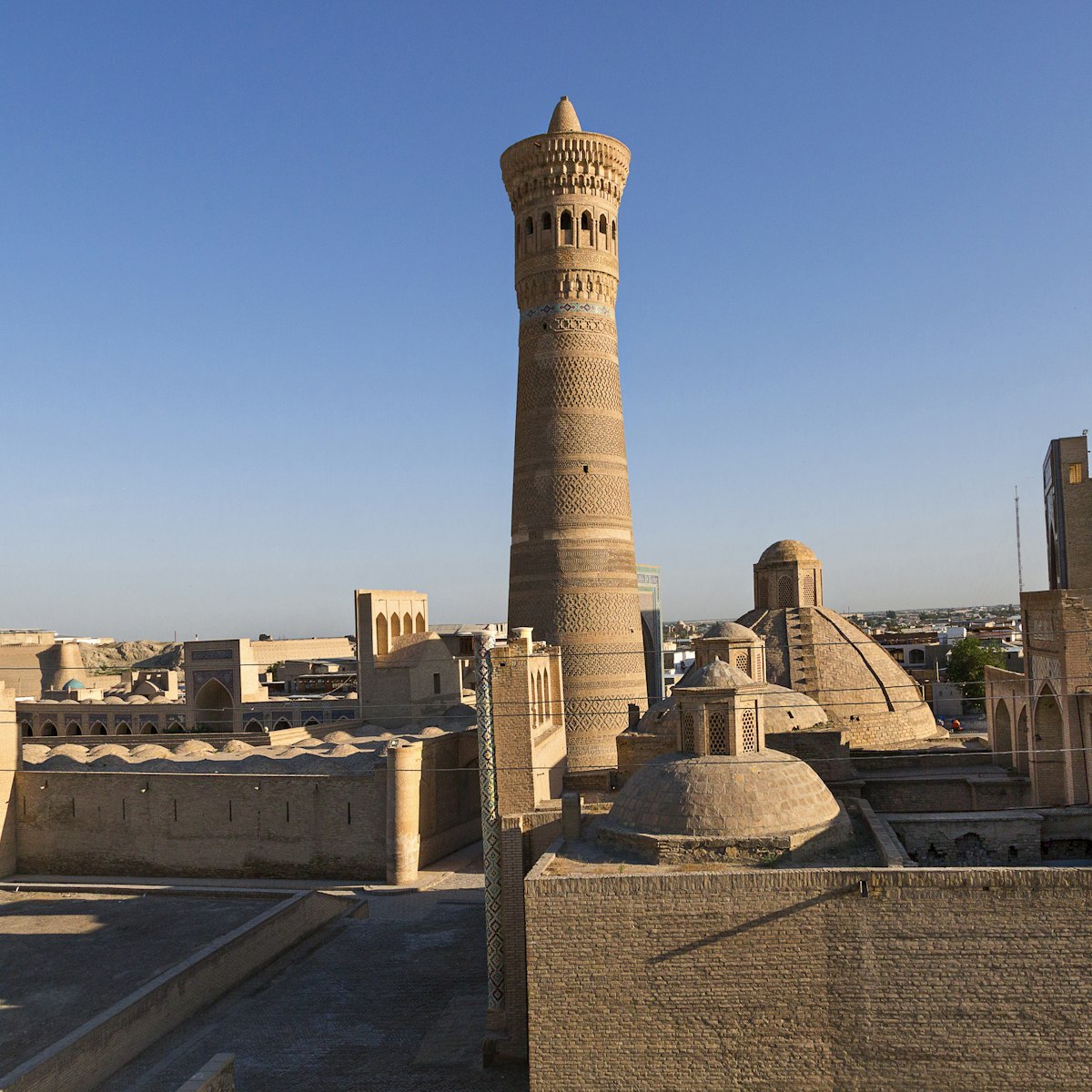
Bukhara
When it was built by the Karakhanid ruler Arslan Khan in 1127, the Kalon Minaret was probably the tallest building in Central Asia – kalon means…
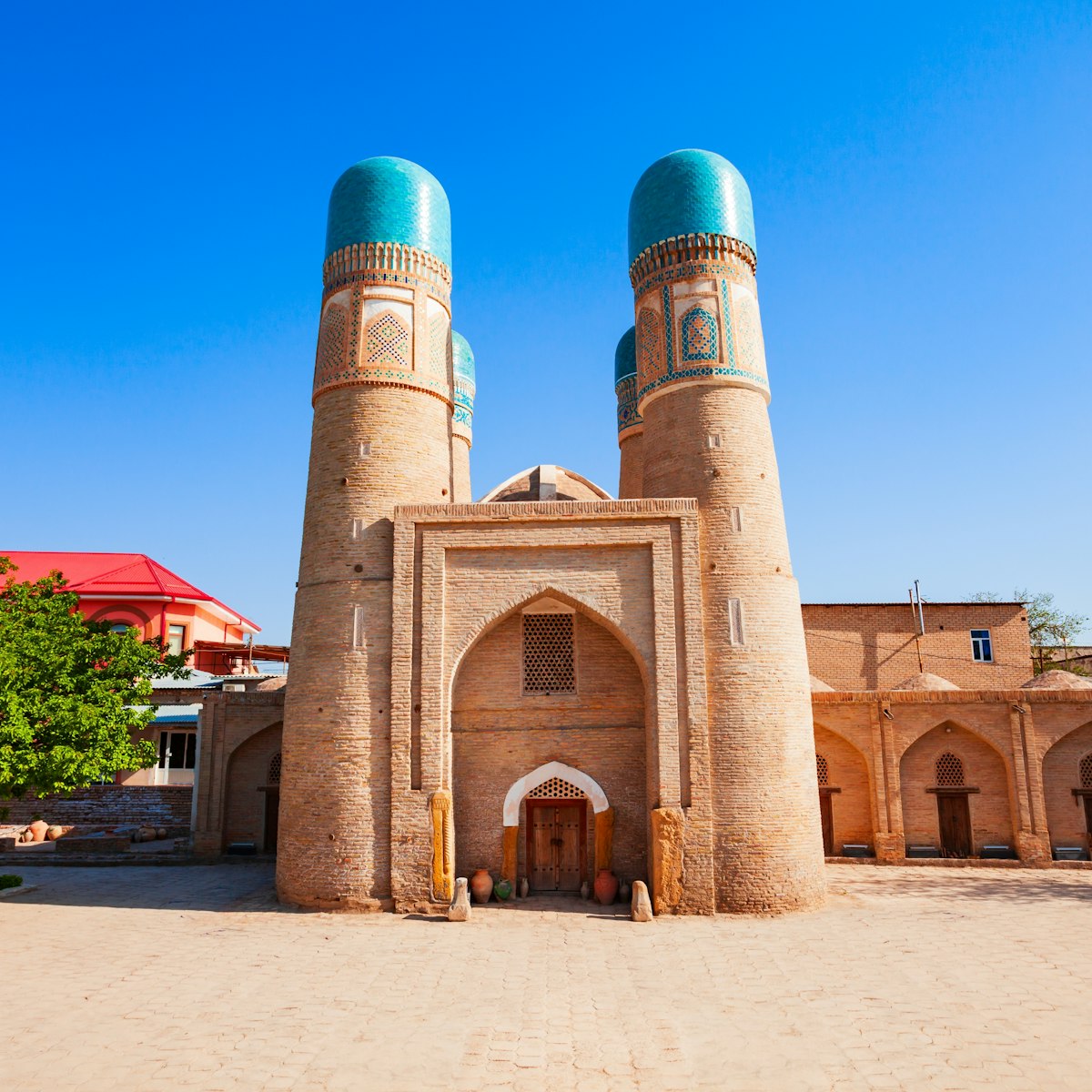
Bukhara
Photogenic little Char Minar, in a maze of alleys between Pushkin and Hoja Nurabad, bears more relation to Indian styles than to anything Bukharan. This…
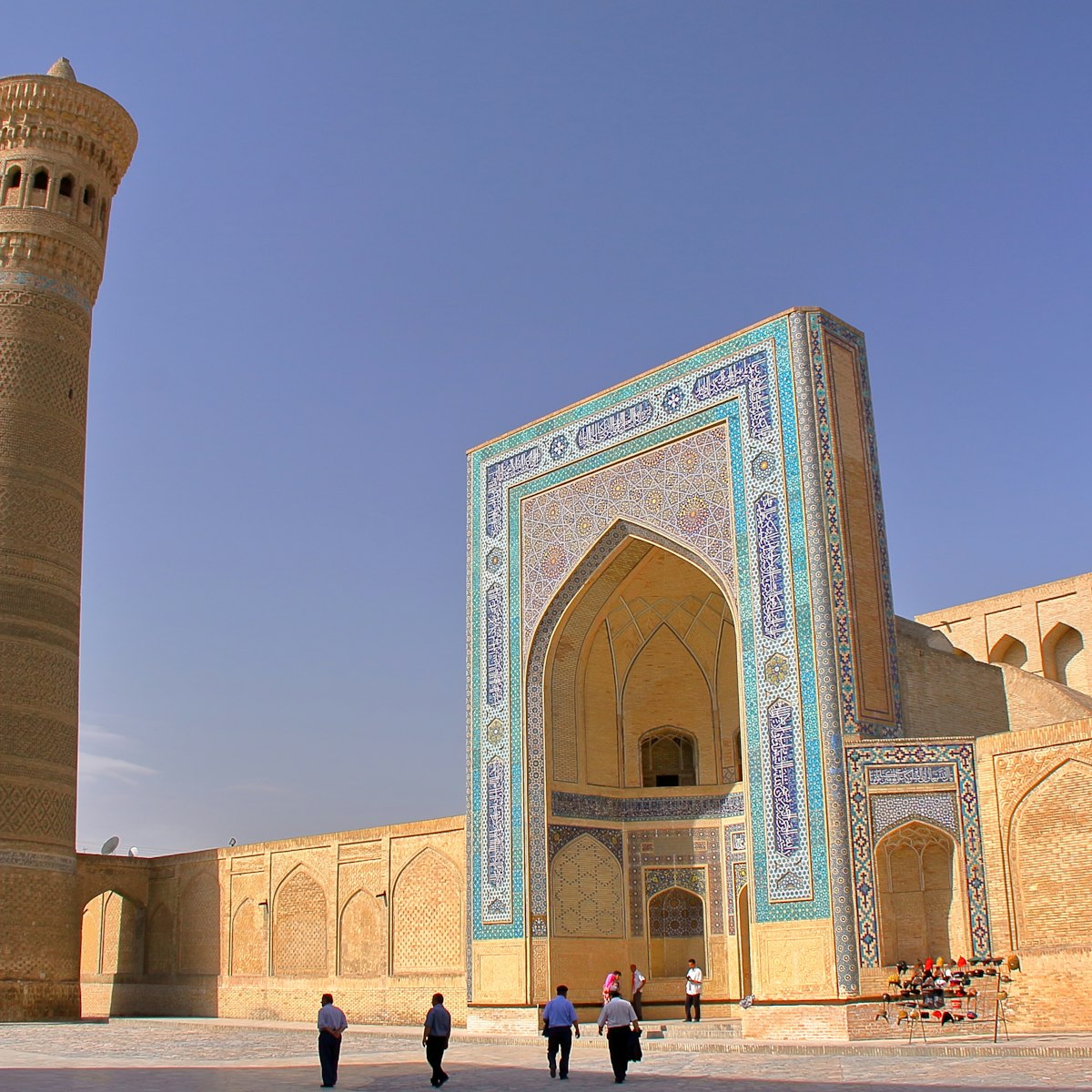
Bukhara
At the foot of the minaret, on the site of an earlier mosque destroyed by Chinggis Khan, is the 16th-century congregational Kalon Mosque, big enough for…
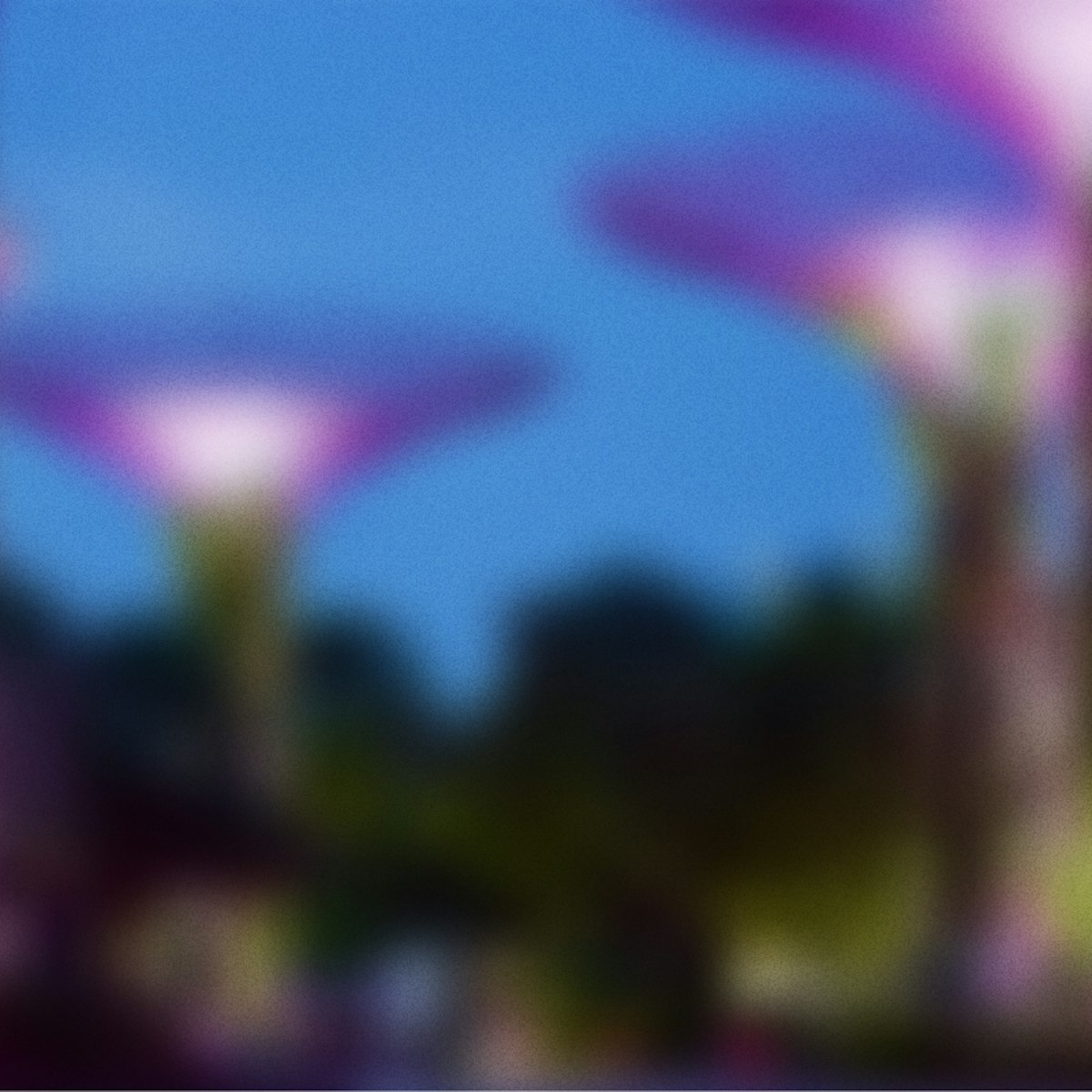
Bukhara
Between the two covered bazaars, in what was the old herb-and-spice bazaar, is Central Asia’s oldest surviving mosque, the Maghoki-Attar, a lovely…
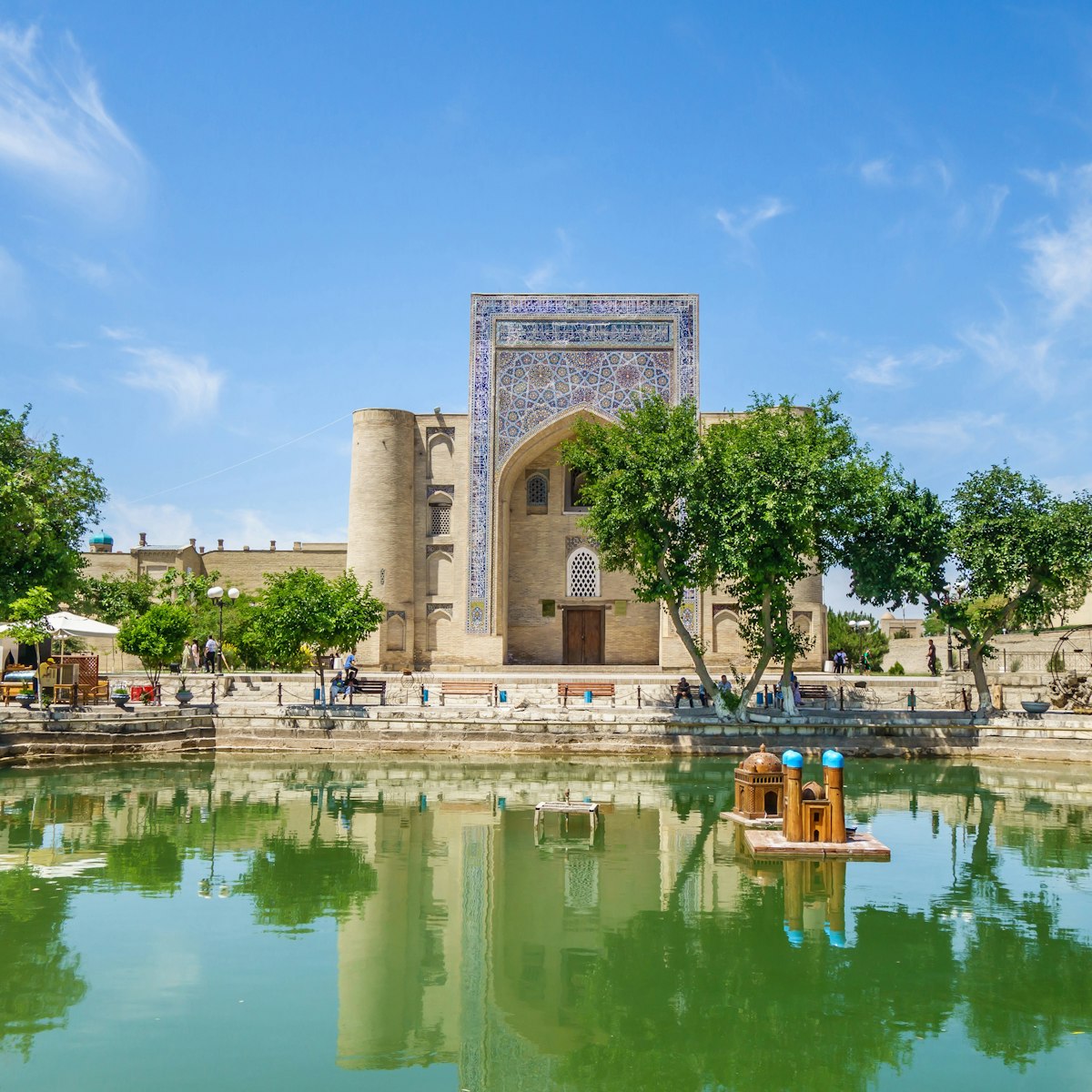
Bukhara
Lyabi-Hauz, a plaza built around a pool in 1620 (the name is Tajik for ‘around the pool’), is the most peaceful and interesting spot in town – shaded…
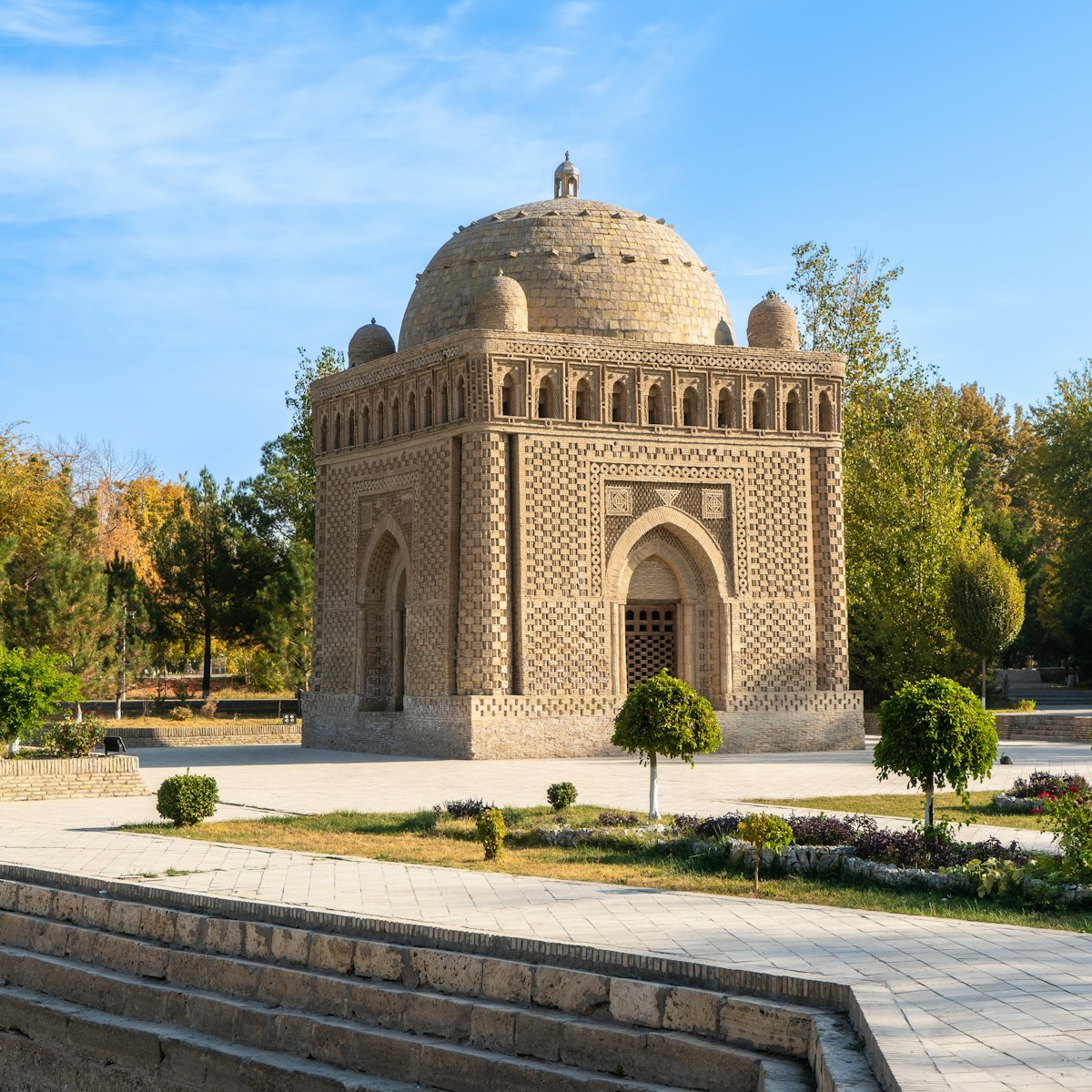
Bukhara
This mausoleum in Samani Park, completed in 905, is the town's oldest Muslim monument and one of its most architecturally interesting. Built for Ismail…

Bukhara
This wealthy merchant's house, built in 1892, was once home to one of Bukhara’s many infamous personalities, the man who plotted with the Bolsheviks to…

Bukhara
This peaceful and little-visited burial complex a few kilometres west of Bukhara is a good place to escape the tour bus crowds and has partially managed…

Bukhara
The peculiar Chashma Ayub (Spring of Job) mausoleum dates from the 12th century and has a tent-like Karakhanid-style roof. Legend has it that the prophet…

Bukhara
For a look at the lifestyle of the last emir, Alim Khan, go to his summer palace (1912–18), 6km north of Bukhara. The three-building compound mixes…

Bukhara
Northeast of the Ark and just behind it is the old Zindon (jail). Morbidly fascinating attractions include a torture chamber, shackles used on prisoners…

Bukhara
Built in 1417, this is Central Asia’s oldest medressa, and may well be familiar to you as it became a model for many others. The blue-tiled medressa, one…

Bukhara
The working Miri Arab Madrasah, with its luminous blue domes, is among Uzbekistan’s most striking buildings, especially in later afternoon light. The…

Bukhara
The Nadir Divanbegi Medressa was built as a caravanserai, but was converted in 1622 after the khan mistook it for a medressa (the khan was considered…

Bukhara
This museum of art has a worthy collection of mostly 20th-century paintings by Bukharan and Russian artists, including the atmospheric works of Pavel…

Bukhara
On the western side of the Lyabi-Hauz is the Nadir Divanbegi Khanaka, a Sufi cloister used for religious ceremonies, debates and instruction. Both this…

Bukhara
Beside a pool opposite the Ark’s gate is the functioning Bolo-Hauz Mosque (1718), the emirs’ official place of worship. The stunning painted wood and…

Jewish Community Centre & Synagogue
Bukhara
Bukhara's main synagogue is in the old town. It holds regular services and also sponsors a functioning Jewish school just around the corner. Look for the…

Bukhara
This private gallery in the former Olimjon Caravanserai contains mesmerising photos of Bukhara Jews, gypsies and city life shot by Bukharan photographer…

Bukhara
The Cap Makers Bazaar is a typically domed bazaar straddling one of Bukhara's main street junctions. It contains several souvenir stalls that still sell…

Bukhara
Not far from the Ismail Samani Tomb is the Talipach Gate and one of the city's few remaining eroded sections of Shaybanid-era town walls. Only 2km out of…

Bukhara
The Moneychangers' Bazaar is a typically domed bazaar straddling one of Bukhara's main street junctions. It contains several souvenir stalls and a…

Bukhara
The student rooms at the 16th-century Abdul Aziz Khan Medressa are occupied, rather typically, by souvenir shops. This is an unrestored gem, built by its…

Bukhara
Only hardcore fans of Islamic architecture will want to travel 2km east of the centre to this delicate little mausoleum, the resting place of a Mongol…

Bukhara
Deep in the old town is the tiny and decrepit Turki Jandi mausoleum, favoured for getting one’s prayers answered. Turki Jandi’s tomb is accessed through…

Bukhara
A century ago there were at least seven synagogues in Bukhara, reduced after 1920 to two. This synagogue is located southwest of the old town – from the…

Bukhara
Southeast of Samani Park are two massive medressas, one named for the great Shaybanid ruler Abdulla Khan (currently empty) and the other for his mother…

Bukhara
In Bukhara's backstreets between Hoja Nurabad and Islamov, across from the Ark on Hoja Nurabad, the interior of the 16th-century Hoja Zayniddin Mosque has…

Bukhara
At the intersection of Jubar and Naqshbandi is the large 16th-century Gaukushan Medressa, with chipped majolica on its unrestored facade. It's normally…

Bukhara
This cemetry, just south of the Old Town, is perhaps the most impressive evidence of the previous size of the local Jewish community. It's a well…

Bukhara
This medressa named after the Shaybanid ruler Abdulla Khan is part of an ensemble together with the Modari Khan Medressa. The medressa is empty but you…

Bukhara
The Kukeldash Medressa, built in 1569 by Abdullah II, was at the time the biggest Islamic school in Central Asia. It now hosts the occasional evening…

Bukhara
On the eastern side of Lyabi-Hauz is a statue of Hoja Nasruddin, a semi-mythical ‘wise fool’ who appears in Sufi teaching-tales around the world.

Bukhara
The displays here on the history and manufacture of Bukhara's famous puppets are worth a quick visit, especially if you have kids in tow.